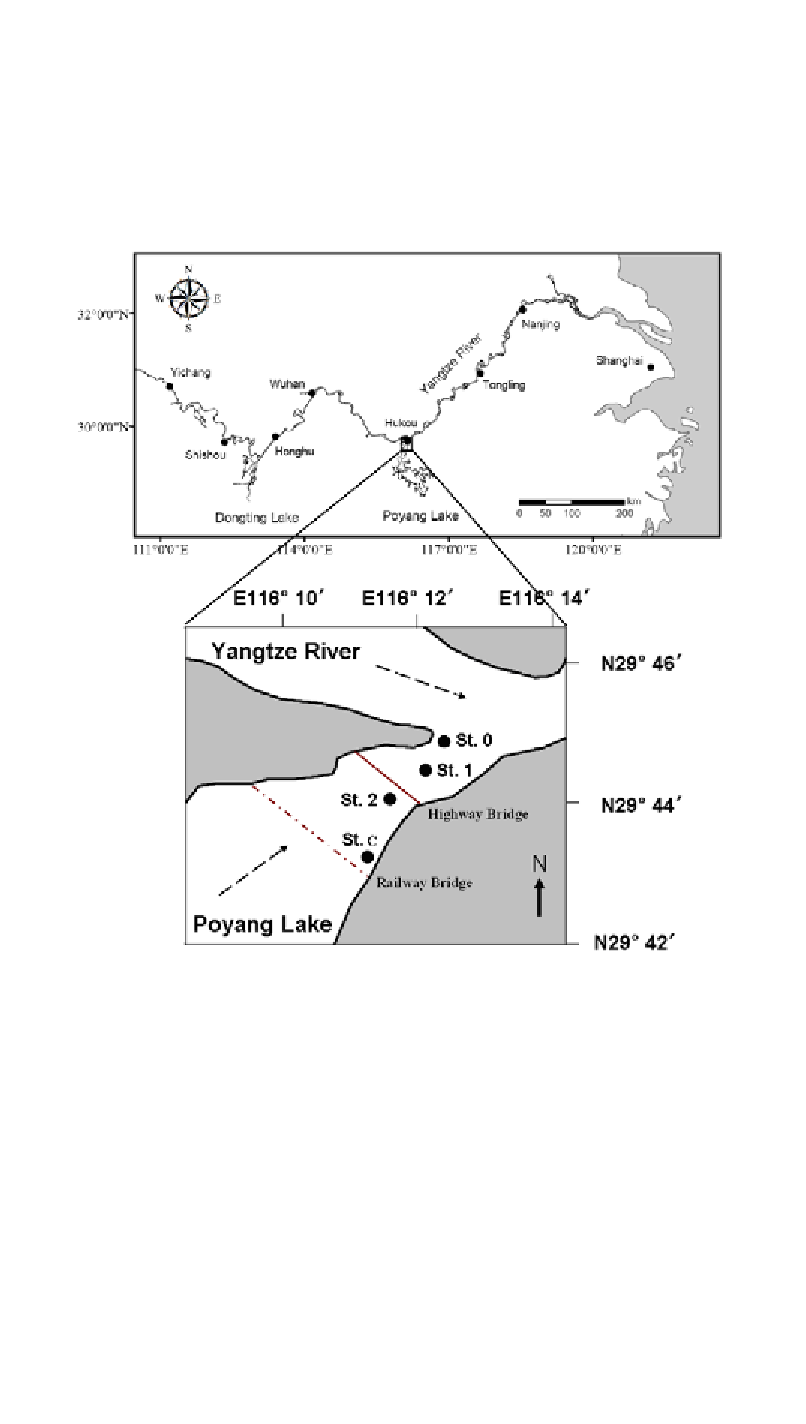Biology Reference
In-Depth Information
was tending to disappear in this channel. Recent visual observation also showed that
porpoises who appeared there were often single and rare. It was also difficult to encounter
porpoises in the section between two bridges (unpublished data). As separation or
fragmentation of groups will cause genetic isolation and negatively affect the sustainable
survival of wild animals, we are very much concerned that ―back and forth‖ movements of
the porpoises between the river section and the lake no longer occur in this channel.
Furthermore, habitat isolation should be avoided for the
in situ
conservation of animals, and
identification of isolated groups is crucial for the conservation and management of wildlife.
Figure 1. Study Stations 0, 1, 2, and C situated at the channel connecting the Yangtze River and Poyang
Lake, China. The upper panel shows the middle and lower reaches of the Yangtze River from Yichang
to Shanghai. The dashed arrows in the lower panel indicate the directions of the water current at the
Yangtze River and Poyang Lake.
Since the finless porpoise is one of the smallest odontocetes and has no dorsal fin, it is
difficult to detect them visually, especially when their group size is small (Akamatsu et al.,
2008b). However, the porpoises emit high-frequency click trains frequently (Akamatsu et al.,
2005) and passive acoustic observation which receives high-frequency sound from the
animals has proved to be effective both on moving (Akamatsu et al., 2001; Akamatsu et al.,

Search WWH ::

Custom Search